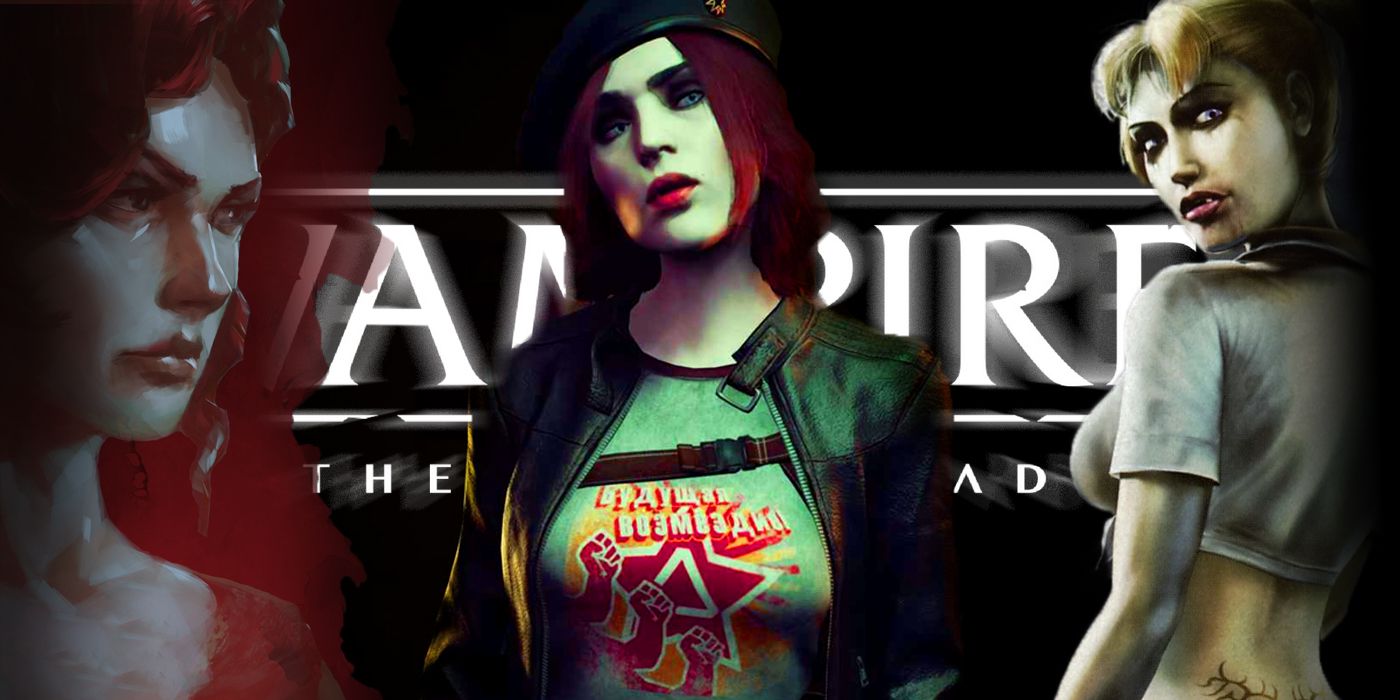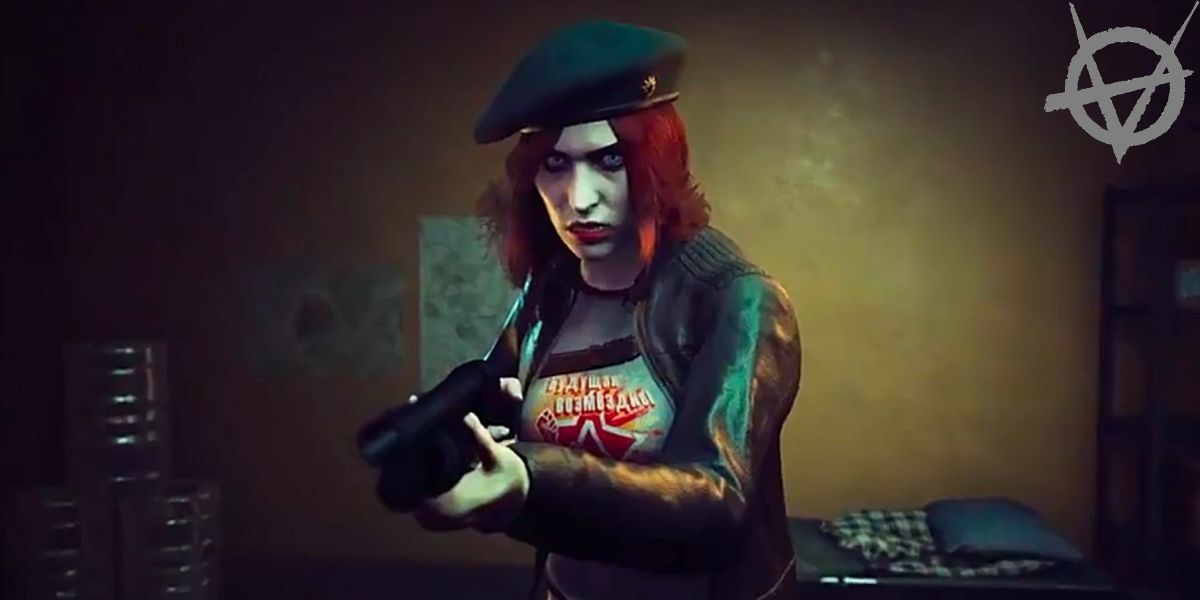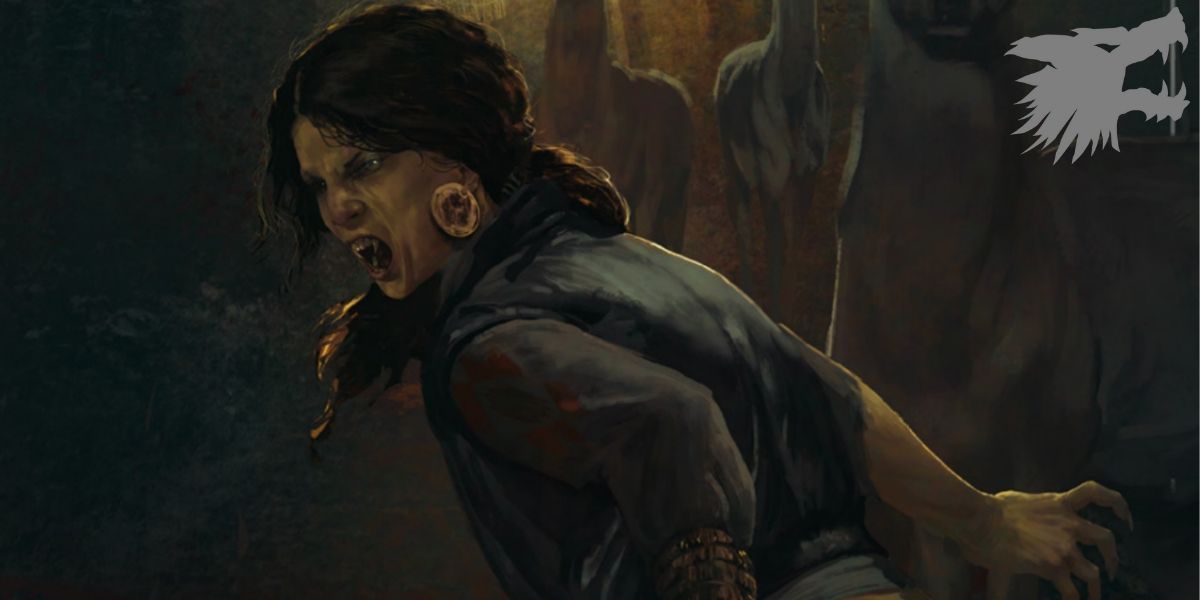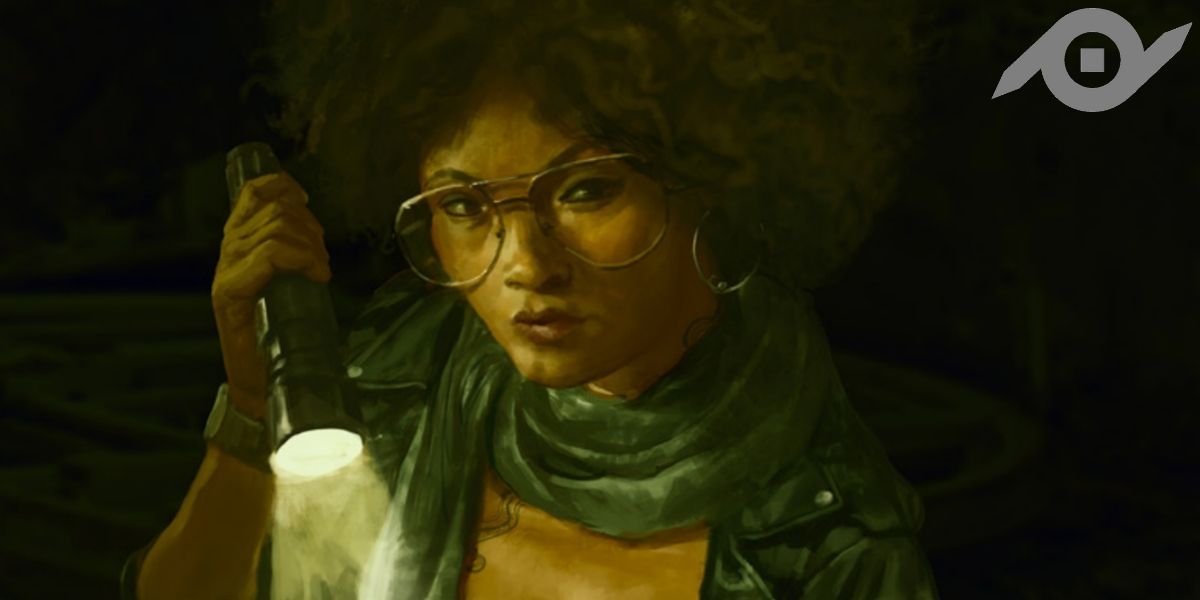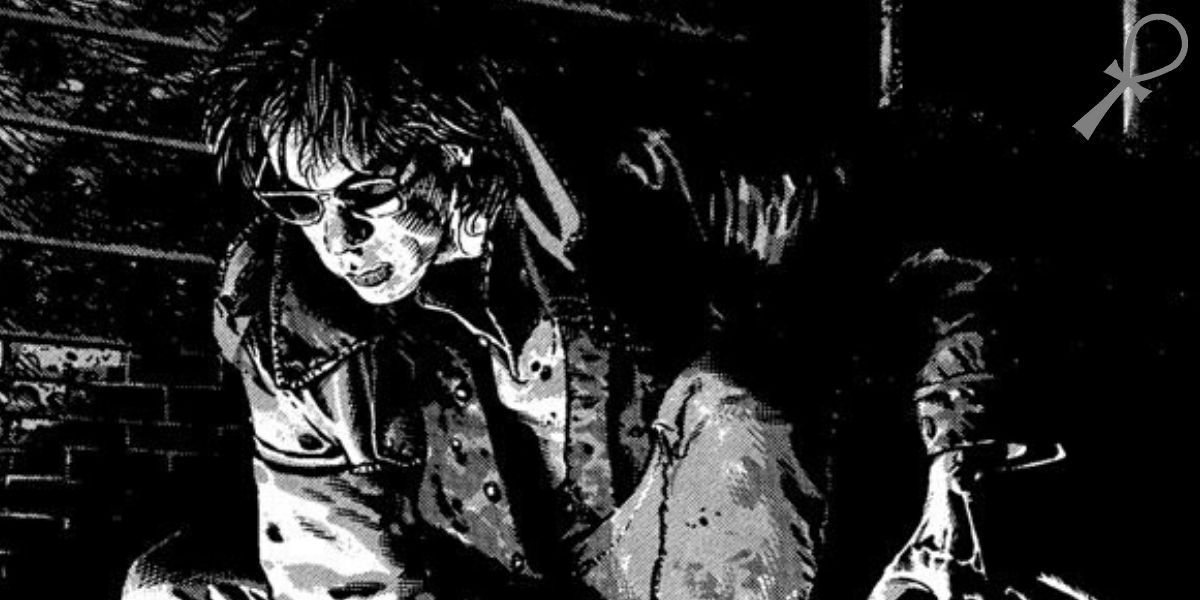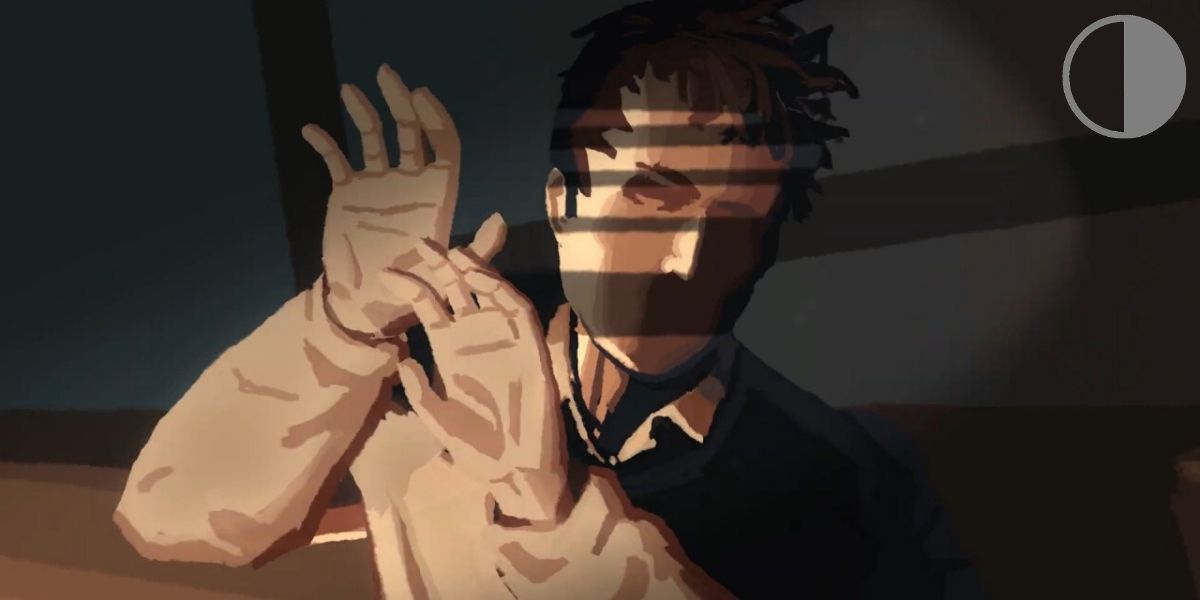Vampire: The Masquerade is a personal horror World of Darkness RPG that released in 1991 that allows players to get into the skins of vampires and become the monsters. It was heavily inspired by the destruction of middle America in the post-Reagan years, the punk and goth movements, and the eternal struggle between generations and class. In the game, vampires belong to factions, or Sects: the insanely evil Sabbat, the decadent but uptight Camarilla and the rebellious Anarchs.
Each sect is favored by different clans, vampires that descended from the same bloodline and share common Disciplines, Banes and (usually, but not always) ideological outlooks. Players that pick the Anarch Sect have to hit the ground running: loosely organized, aspirationally democratic and with a liberal Embrace policy, most Anarch fledglings are on their own from night one. In exchange, they get to live their unlife as they please, as long as they respect the basic Traditions of the Masquerade. Let's take a look at the main clans that favor the Anarch movement.
Brujah
Brujah are the heart and soul of the Anarch Movement. They were once known as the Philosopher Kings of Carthage, and to this day, they combine their rebellious nature with intense ideals and a physical prowess able to move mountains. Brujah's are quick thinkers, passionate about causes and quick to anger. Within their clan, they are divided between Iconoclasts (usually younger, angrier and more active) and Idealists (usually elder or ancillae and more inclined to explore the theory of making the world a better place).
Brujah used to be evenly divided between the Anarchs and the Camarilla, with a few antitribu joining the Sabbat. However, a 2012 incident in which an elder Ventrue was killed made them leave the Camarilla en masse. Brujah prosper in the Anarch Free States set across the Pacific coast, and they are trying to extend their influence to Seattle.
The Brujah Disciplines are Celerity, Potence and Presence, which make them formidable foes in battle. Their clan Bane is how easily they Frenzy (losing control of their body to the thirsty, destructive Beast) combined with the Compulsion of constantly wanting to oppose the status quo (which can be their leader, an idea or even a construction project). This Compulsion makes them really fun to roleplay, as players will have to go out of their way to convince others of their point of view or destroy offending property before they can roll in peace.
Gangrel
The Gangrel are a nomadic clan that feels most at home in the wilderness and the open spaces. They are called the Clan of the Beast, as whenever they Frenzy, they gain an animalistic trait. They can also shapeshift into animals, as well as communicate with and control them. Gangrel are very independent, very loyal to their kind and very hands-off with their Childer, as they believe that experience will either kill the fledglings or make them stronger. They also have a strong oral tradition and are curious historians. It was this preference for truth over myth that made them leave the Camarilla, as they became disgusted with the king-making myth-building of the Ventrue, among many other things.
Gangrel embrace humans brave enough to walk alone in the wilderness and strong-willed enough to try to fight them while they're feeding. Their disciplines are Animalism, which allows them to communicate and dominate animals; Fortitude, which makes them impervious to damage; and Protean, the shapeshifting discipline. Their Bane is the temporary animalistic trait that they gain after Frenzying, which handicaps their social rolls, and their Compulsion is Feral Impulse, where they return to an animalistic state where they can barely speak, stand up straight, wear clothes or solve differences without teeth and claws.
The Ministry (Followers of Set)
The Ministry firmly believe in Set, the Egyptian god of destruction, dissent, darkness and desert storms, breaker of the chains of self and liberator of human mores. They originated in Egypt, quickly finding recruits and, as the centuries passed, mutating their mask to better fit the most appropriate theological theory. There are two kinds of Ministry vampires: those that were embraced within the Setite bloodline and those that were embraced by other clans but converted to the Ministry. The Ministry considers these conversions a time to rejoice, and they are very welcoming and accepting of these inductees, teaching them their clan Disciplines. Ministry characters are usually charismatic, warm and natural-born tempters, joyously encouraging others to follow their basest instincts into the abyss.
The Setite Disciplines are Obfuscate, to hide; Presence, to awe their followers; and Protean,which they tend to use to turn into serpentine creatures. Their Bane is their vulnerability to the light, both natural and artificial, which makes them recoil and weakens them. Their Compulsion forces them to constantly entice themselves and others to break their personal convictions -- what are these but chains by a different name?
Caitiff
Caitiff are either vampires that were abandoned by their sires right after the Embrace and were never inducted into their personal vampire society or vampires that mysteriously lack Banes, as well as the ease to learn new Disciplines. Both kinds are considered unbound bastards by the Camarilla, and their lack of in-built allegiance even makes some Anarchs mistrust them. Caitiff are usually (but not always) vampires from a high generation and used to surviving on their own. They usually came to understand their new state on their own or with the help of pop culture, and they are largely ignorant of the comings and goings of vampiric society.
Caitiff players can give their characters any Discipline when they create them, but once the game begins, they will have to spend six times the usual amount of experience points to purchase another dot. This system was put in place to discourage overpowered, flawless vampiric characters. Some Caitiff are able to join the Camarilla if they provide useful services like ruling over a small, unimportant domain and swearing loyalty to the closest Prince. Most are independent, Anarchs or even Sabbat.
Duskborn (Thin Bloods)
Thin Bloods are vampires whose blood is so diluted that they can even walk in the sun -- if it's cloudy or twilight, at least. Many can still eat food, drink alcohol, have sex and carry on a mostly normal life -- except for their need for blood and their agelessness. However, Thin Bloods are extremely weak vampires, unable to acquire permanent Disciplines. They are, at best, frowned upon and, at worst, hunted by other vampires. Many clans are jealous of how close the Duskborn are to humanity, while others are convinced that their proliferation is a bad omen and a potential breach of the Masquerade.
Duskborn are also able to practice Blood Alchemy, a skill that allows them to create blood potions to acquire temporary powers and Disciplines. Duskborn that survive their first nights should find a way to render themselves indispensable or invisible to avoid elimination. At creation, players will have to chose up to three merits and flaws, which include characteristics like being fangless and having to cut or needle their victims, having a lifelike appearance or possessing a beastly temper.
The video game Vampire: The Masquerade - Bloodlines featured the Santa Mónica coterie of thin-bloods, an NPC mission hub. In the upcoming sequel Bloodlines 2, the player character starts as a young Duskborn and will be able to pick a clan five hours into gameplay.

